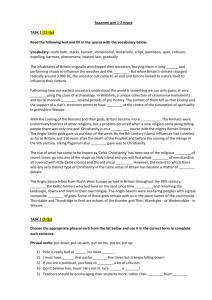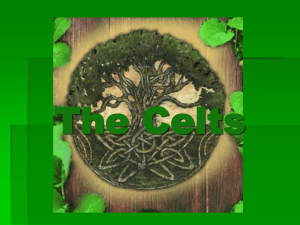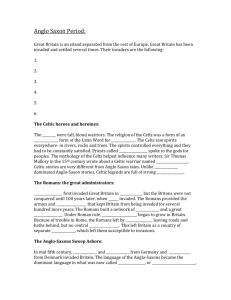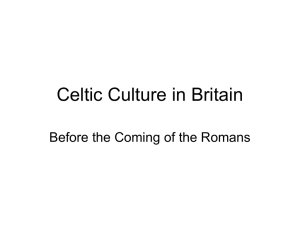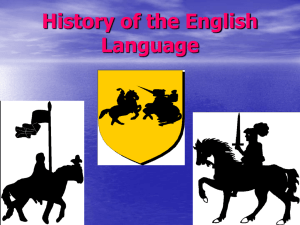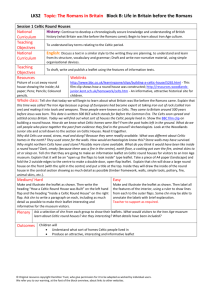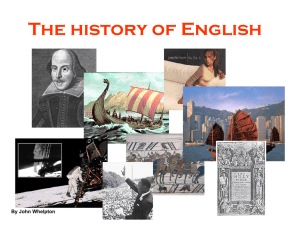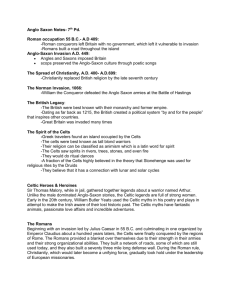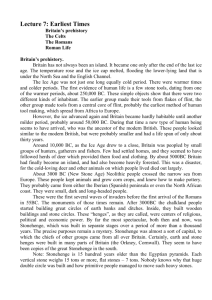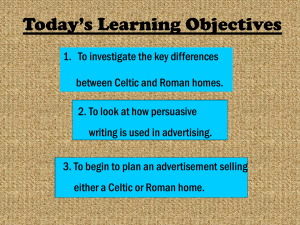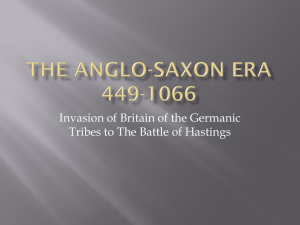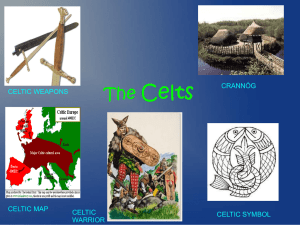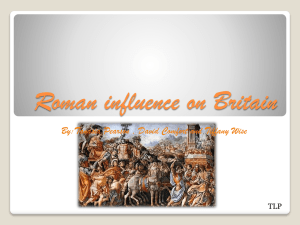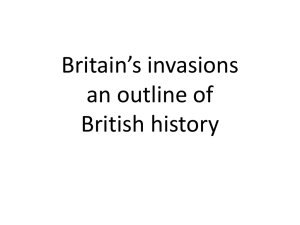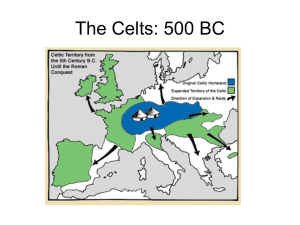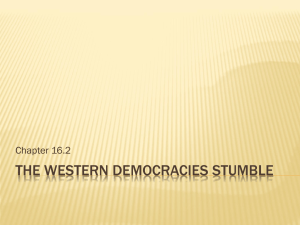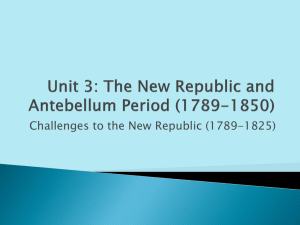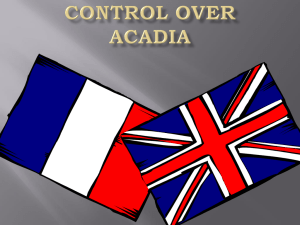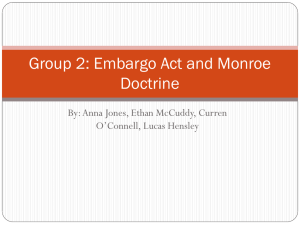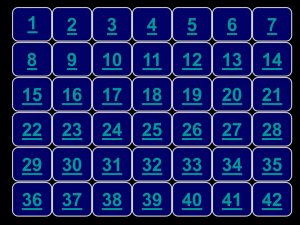Christianity
advertisement
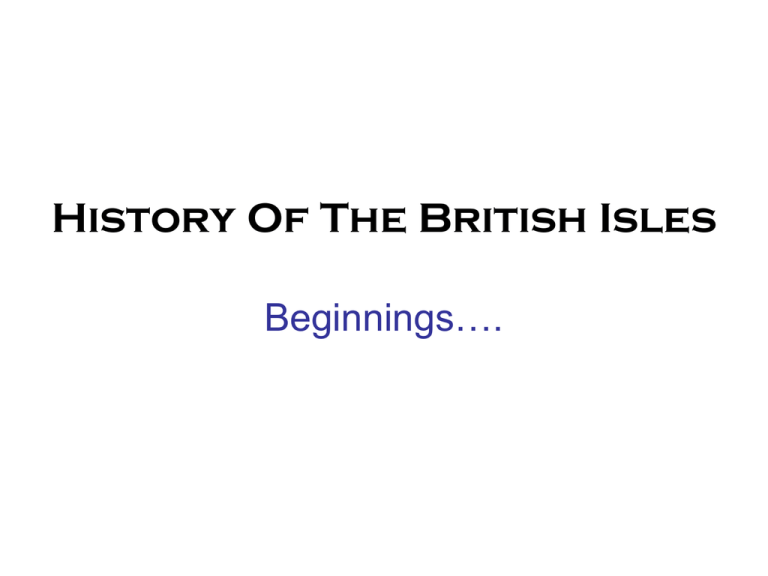
History Of The British Isles Beginnings…. Geography and the Mingling of the Races • • • • • • • • Today's Britain formed by 7000 BC. Surrounded by the sea - both a passive and receptive relationship West and north dominated by hills and mountains, south and east comparatively flat but with own uplands (limestone ridge runs from Portland Bill and the Cotswold's to the Cleveland hills, chalk hills of the Chilterns and Sussex and Dorset Downs). Climate is temperate - mild winters and warm summers. The British are a people of mixed blood This mixing of races was largely completed by the time of the Norman conquest; however, since then forced entry has been replaced by a slow peaceful infiltration of other races, Huguenots, Irish, West Indian, Asian etc. To invade Britain was easy before the coming of the Normans ,but immensely difficult afterwards. The first few lectures will look at the period from 55 BC to 1066 A.D., that is when Britain faced wave after wave of invaders. “This royal throne of kings, this sceptered isle, This earth of majesty, this seat of Mars, This other Eden, demi-paradise, This fortress built by Nature for herself Against infection and the hand of war, This happy breed of men, this little world, This precious stone set in the silver sea, Which serves it in the office of a wall, Or as a moat defensive to a house, Against the envy of less happier lands, This blessed plot, this earth, this realm, this England” Richard II •7000 BC the two islands formed by retreating glaciers. •Britain sparsely populated by hunter gatherers. •The Neolithic period: 4000 BC immigrants arrived probably farmers, skilled in pottery, use of long barrows and brought agriculture to Britain. These people were Iberians and were skilled traders. A few centuries later their descendants were building stone tombs, for example those found in the Orkneys and by 2500 BC the first phase of Stonehenge was completed. •The building of Stonehenge suggests strong government unity and stability. •Bronze age: In 2000 BC a new wave of migration occurred with the arrival of the Beaker people (Importance of alcohol) from Holland and the Rhineland. They brought with them the knowledge of metalworking and they were also those who erected the inner circle of Stonehenge using bluestones from Pembrokeshire. Stonehenge • • • • • • • Stonehenge dominating monument of British early history. Started ca. 2500 BC and took many hundreds of years to build and 30 million man hours. It has been established it was in use ca. 1848 BC The blue stone conundrum Its purpose? Stone east of the altar stone casts a shadow on the altar on June 21st - Summer solstice For many years it was believed that the Celts had built Stonehenge but archaeology shows this to be untrue. There is, however, no doubt that they made use of it. The Celts (part 1) • • • • • • • • • Brought iron to Britain and Ireland Characteristics of a civilisation. Shared culture with continental Celts e.g. art, language and religious beliefs (e.g. cult of the severed head (see next slide). Celtic language still survives in Ireland, Wales, Scotland and Cornwall Traditional features of society: kinship (power and prestige rested within the kinship group, land was not communally owned but resided within the nuclear family), no national identity (identity tied up with the tribe) Farmers and hunters, tightly knit clans. Druids were the religious class who resolved disputes between clans. Druids presided over religious rituals including prayer and sacrifice. Anglesey their center. Celtic religion a kind of animism (animus meaning spirit). Spirits were in everything. These spirits controlled all aspects of existence and had to be appeased (kept happy) Perfect harmony created with the union of Mother Goddess (nature itself) and the Great Father (the tribe and its culture) The Celts Cult Of The Severed Head • • • The ancient Celts had a religious fascination with the human head. Celtic myths are full of severed heads, like that of Bran the Blessed that kept Britain safe so long as it was buried on Tower hill. According to Greek and Roman historians, Celtic warriors took the heads of their enemies as trophies: “The heads of their most distinguished enemies they embalm in cedar-oil and carefully preserve in a chest, and these they exhibit to strangers, gravely maintaining that in exchange for this head some one of their ancestors, or their father, or the man himself, refused the offer of a great sum of money” The Romans • • • • • • • • . Julius Caesar 55-54 BC (see top image) made a ‘hit and run’ attack on Britain. Exaggerated his invasion somewhat, ‘Veni, Vidi, Vici’ Why did he invade Britain? Julius Caesar marks the beginning of Britain's history, as he was the first to write of the land and its people. An invasion of the south east rather than an invasion of Britain. Claudius (see bottom image) in 43 AD conducted a ‘proper’ invasion, which faced many obstacles and took some time. Why did he invade Britain? This saw the establishment of military camps (called castra), that eventually developed into towns with roads, villas, baths etc Primarily an urban transformation rural life continued much as before. Impact Of Romans On British Isles • • • • • • • • • Immense: it is very difficult to see any fragments of Celtic Societies, however, the same can be said for Roman culture. However, Celtic roots were not destroyed rather they lay dormant for hundreds of years. The south of Britain saw the greatest changes, Celtic language, religion, law, social institutions lost their dominant status The Romans wanted to unite the country under one economy, one culture and, most importantly, one government. Advantages of occupation: period of relative peace and prosperity, development of infrastructure, Christianity, rural development and firm government. Disadvantages: The imposition of one culture on another can never be seen as good. The further north you go the less the impact of Romanization (e.g. Hadrian’s wall) Those areas that Romans had less impact on, are those areas today where Celtic/Iberian culture still exists i.e. Cornwall, Ireland, Wales, Scotland Ireland had peaceful contact with the Romans, the greatest impact the coming of the Romans had on Ireland was the arrival of Christianity with St. Patrick. Christianity • • • • • The fourth century (306 AD) saw Christianity becoming the established religion of The Roman Empire under Emperor Constantine. Church organised in the same way as the secular administration. Administration units (dioceses) headed by bishops (governors) who, in turn, were responsible to the Pope (Emperor) Christianity vs. Druidism Druidism: local, oral, secrecy Christianity: Centralised, written, uniform Latin was the language of the empire and the gospels, therefore Christian missionaries were also missionaries of Romanization – indistinguishable. The Romans Depart • • • In AD 407 the last Roman soldiers left the British Isles Why? Rome herself was under attack from Northern European tribes and Britain's legions were needed to help in the defence. Legacy of The Romans North/South Cultural Divide • • • • South-Thames Estuary to Bristol Channel-heavily Romanised North-includes Wales, Cornwall, Scotland and Ireland-less so and maintained distinctive Celtic/Iberian flavour. Took what it wanted from Roman influence e.g. Celtic Christianity. This divide exists still today. Language, values and so on. In conclusion it is safe to say that despite the Roman occupation lasting some 350 years, large areas of the British Isles maintained their distinctive Celtic/Iberian identity.
